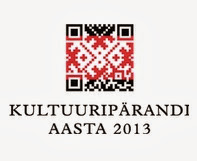What happens when an Estonian and a
Russian meet? The Estonian remains silent and listens to the Russian, no matter
whether the latter comes from Tallinn or Saint Petersburg. Still, both
Estonians and Russians value wisdom, amiability, and sociability in their
conversation partners.
These are the stereotypes Estonians,
as well as Russians of both Estonia and Russia, have about communication, as
shown by a study conducted at the University of Tartu Institute of Psychology by
Luule Mizera, Tiia Tulviste, Kätlin Konstabel and Enel Lausa.
Usually, personality traits are the
main focus in research of ethnic stereotypes. So, we know that Estonians
treasure their diligence, honesty, peacefulness, and humble nature. It must be
taken into account that politics and economy have an impact on stereotypes,
while neighbouring nations are often described as opposite to those doing the
describing — a bit like their mirror image.
Communication stereotypes stand for a
social construct of a communication style attributed to a representative of
certain culture or nationality. The scientists were interested in which kind of
communicators Estonians and Russians consider themselves to be, as well as
which features they see as characteristic of neighbouring nations. In addition
to this, they wanted to know the concept of an ideal communicator for both nationalities.
Estonians’ communication stereotypes
hadn’t been studied before, but there is data about Estonian and Finnish
communication practices. On both sides of the Gulf of Finland there is
resistance to social conversation. Russians, on the other hand, are considered
to be impulsive.
Thus, the researchers expected that
Estonians would value peacefulness and Russians openness in communication. It
was also presumed that Russians would be considered to be cheerful and
Estonians peaceful — by both nationalities.
In all, 281 persons were surveyed. 54
of them were exchange students from Saint Petersburg, and the others were
students of both Estonian and Russian heritage living in Estonia permanently.
The participants had to characterise
different nationalities’ communication styles and decide which one of two
opposite adjectives works better in describing the communication style of a
specific nationality. In addition to this, they had to describe what they
considered an ideal communicator to be.
Taciturn Estonians
and open Russians
The Estonians thought of themselves
as reserved, modest, and bashful. Russians were considered emotional, open,
talkative, and friendly socialisers. Russians mostly see themselves like that
as well. There were differences between the two selections of Russians. It
could be presumed that Russians living in Estonia might be a bit more similar
to Estonians, but, surprisingly, Russians living in Russia consider themselves
to be less friendly than Estonian Russians. This might be a sign of Estonian
Russians trying to be opposite to Estonians.
Both Estonian Russians and students
from Saint Petersburg described Estonians as silent and polite. Those coming
from Russia saw Estonians as slower a bit more. In Russia, there are anecdotes
about the slowness of Estonians, which can lead to a cartoonish picture of the
nation. Russians who have regular contact with Estonians are more used to their
temperament.
According to the questionnaires, the
respondents’ opinions about Russians tended to be more homogeneous. It may be
that large nations have more consistent images. Furthermore, many Estonians
have contact with Russians, while students living in Russia have only temporary
contact with Estonians.
All groups of people questioned
mentioned wisdom, friendliness, and sociability as attributes characteristic of
an ideal communicator. Estonians’ opinion about their typical compatriot is
more centred on reservedness. Thus, a typical Russian has more traits
characteristic of an ideal communicator in the view of Estonians. Russians find
these traits in themselves. It has been shown before that Russians mostly think
well of themselves.
Luule Mizeraa, Tiia Tulvistea, Kätlin
Konstabel, Enel Lausa (2013). Silent and Slow Estonians, Emotional and Fast
Russians: A Comparative Study of Communication Stereotypes in Two Neighboring
Countries. Communication Quarterly, 61 (3) DOI: 10.1080/01463373.2012.751927
.jpg)


















